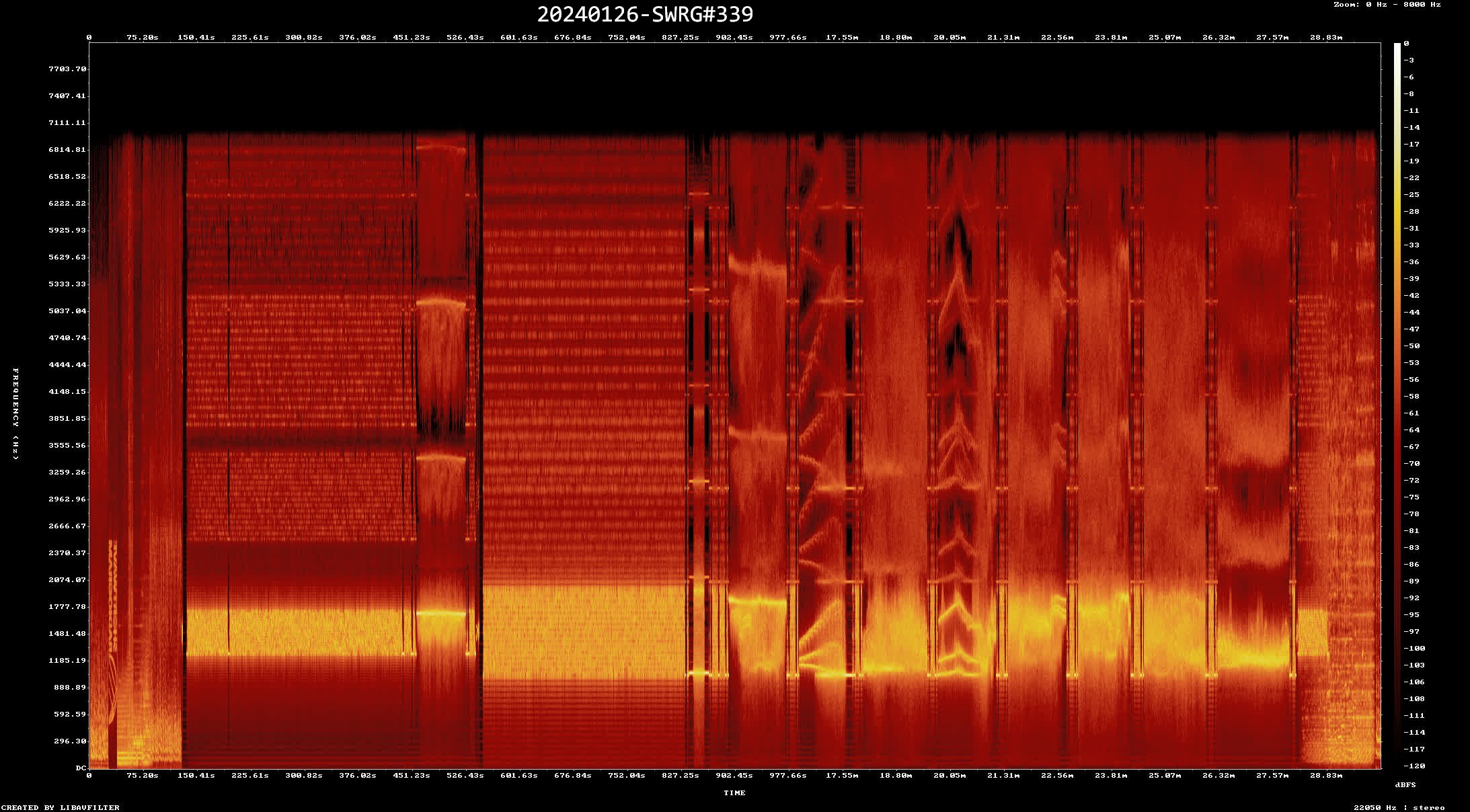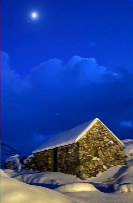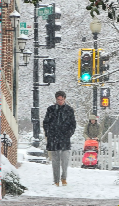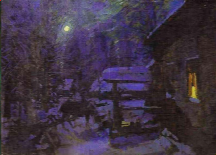
http://www.rhci-online.net/radiogram/radiogram.htm
https://github.com/GyanD/codexffmpeg/releases/tag/2023-03-05-git-912ac82a3c
set MyFiles=*.flac *.fla *.wav *.aif *.mp4 *.mp3 *.mp2 *.aac *.ogg
*.m4a

RSID: <<2024-01-27T03:31Z
MFSK-32 @
9265000+1500>>
Welcome to program 339 of Shortwave Radiogram.
I'm Kim Andrew Elliott in Arlington, Virginia USA.
Here is the lineup for today's program, in MFSK modes as noted:
1:41 MFSK32: Program preview (now)
2:48 MFSK32: Lightweight woven antenna for field satcom*
8:33 MFSK64: Why we need Shortwave 2.0*
14:02 MFSK64: This week's images*
27:39 MFSK32: Closing announcements
* with image(s)
Please send reception reports to
radiogram@verizon.net
And visit http://swradiogram.net
We're on X/Twitter now: @SWRadiogram
From New Atlas:
Lightweight woven antenna could replace field-deployed dishes
By Ben Coxworth
January 22, 2024
Ordinarily, in order to establish communications at locations
such as disaster sites, rescuers have to transport and set up
relatively bulky, costly satellite dishes. Soon, however, a
simple tubular antenna made of woven strips of material may get
the job done.
Developed by scientists from Stanford University and the American
University of Beirut, the prototype device is a form of what's
known as a helical antenna. In general, this type of antenna
consists of one or more conductive wires wound in a helix (like a
corkscrew) around a central support mast.
We recommend
The new "bi-stable deployable quadrifilar helix antenna" does
away with the support, and replaces the wires with strips of a
conductive fiber composite material – these are wound together in
a helix pattern, to form a hollow cylinder.
Importantly, that cylinder can be pulled out into a long skinny
configuration about one foot tall (305 mm), or pushed down to
form a ring about one inch tall by five inches across (25 by 127
mm).
In its long state – and when connected to electronics such as a
transceiver, ground plane and battery – the antenna emits a
low-power signal in all directions, allowing for radio
communications with ground-based team members. In its short
state, it sends a high-power signal in a specific direction,
allowing for satellite communications.
The frequencies utilized in either state are determined by the
exact dimensions of each individual antenna.
One thing that helps keep setup simple is the device's bi-stable
construction. This means that when pulled or pushed by hand, it
will automatically pop itself into the desired configuration – so
there's no guesswork as to whether or not it's been properly
deployed, whether at a disaster site, battlefield, or potentially
even in a spacecraft.
"The state-of-the-art solutions typically employed in these areas
are heavy, metallic dishes. They're not easy to move around, they
require a lot of power to operate, and they're not particularly
cost-effective," said Stanford's Asst. Prof. Maria Sakovsky. "Our
antenna is lightweight, low-power, and can switch between two
operating states. It's able to do more with as little as possible
in these areas where communications are lacking."
A paper on the research was recently published in the journal
Nature Communications.
Source: Stanford University
https://newatlas.com/telecommunications/woven-helical-antenna/
See also:
https://techxplore.com/news/2024-01-portable-antenna-communication-disasters.html
Image: The extended bi-stable deployable quadrifilar helix
antenna ...
Sending Pic:116x198C;

Shortwave Radiogram now changes to MFSK64 ...
RSID: <<2024-01-27T03:39Z
MFSK-64 @
9265000+1500>>
This is Shortwave Radiogram in MFSK64
Please send your reception report to radiogram@verizon.net
From Radio World:
|
Why We Need "Shortwave 2.0" |
Warum wir "Kurzwelle
2.0" brauchen an größere Bevölkerungsgruppen in ihren Ländern weiterzugeben, wenn neuere Medien blockiert
werden oder anderweitig nicht mehr verfügbar sind. Was
bringt uns zu "Kurzwelle 2.0". |
https://www.radioworld.com/columns-and-views/guest-commentaries/why-we-need-shortwave-2-0
Sending Pic:398x70;

This is Shortwave Radiogram in MFSK64
Please send your reception report to radiogram@verizon.net
This week's images ...
A child sleds in front of the Lincoln Memorial after Washington
DC's snowfall, January 16.
http://tinyurl.com/yqpxgevy ...
Sending Pic:200x135C;

Sunrise at the Mullard Radio Astronomy Observatory in Cambridge,
England, January 15.
http://tinyurl.com/yvnyemsq ...
Sending Pic:255x97C;

A pygmy seahorse in the Lembeh Strait, Indonesia.
http://tinyurl.com/yw7zn8k5 ...
Sending Pic:151x198C;

A snowy scene in Strathan, by Lochinver, Scotland.
http://tinyurl.com/ypcldcff ...
Sending Pic:133x203C;

A snowy scene at the World War I memorial in Washington DC,
January 19.
http://tinyurl.com/yup8lzvc ...
Sending Pic:208x131C;

The Georgetown neighborhood of Washington DC during the recent
snow. http://tinyurl.com/yro9w786 ...
Sending Pic:119x206C;

During a January freeze at the Dallas Arboretum, these pansies
kept their bright colors and "displayed minimal crinkling."
http://tinyurl.com/ynz7j99s ...
Sending Pic:205x140C;

Our painting of the week is "Moonlit Night, Winter" (1913) by
Konstantin Korovin.
http://tinyurl.com/yvp5fyqa ...
Sending Pic:216x155C;

Shortwave Radiogram returns to MFSK32 ...
RSID: <<2024-01-27T03:58Z
MFSK-32 @
9265000+1500>>
This is Shortwave Radiogram in MFSK32 ...
Shortwave Radiogram is transmitted by:
WRMI, Radio Miami International, wrmi.net
and
WINB Shortwave, winb.com
Please send reception reports to
radiogram@verizon.net
And visit http://swradiogram.net
Twitter: @SWRadiogram or
twitter.com/swradiogram
I'm Kim Elliott. Please join us for the next Shortwave
Radiogram.
|
https://jadquir.xyz/pages/mra/index.html#about SWRG#339 closing song:https://www.shazam.com/de/track/45286328/california-soul
https://www.theguardian.com/music/2024/jan/23/marlena-shaw-obituary
|
http://www.rhci-online.net/radiogram/radiogram.htm
|
QTH: |
D-06193 Petersberg (Germany/Germania) |
|
|
Ant.: |
Dipol for 40m-Band & Boomerang Antenna 11m-Band |
|
|
RX for RF: |
FRG-100B + IF-mixer & ICOM IC-R75 + IF-mixer |
|
|
Software IF: |
con STUDIO1 - Software italiano per SDR on Windows 11 [S-AM-USB/LSB] + HDSDR 2.81 beta6 - for scheduled IF-recording |
|
|
Software AF: |
Fldigi-4.1.26 + flmsg-4.0.20 images-fldigifiles on homedrive.lnk |
|
|
OS: |
Mirosoft Windows 11 Home |
German W7 32bit + 64bit |
|
PC: |
ASUS S501MD (since 2023) [i7-12700 12th Gen. 12 x 2100 MHz] |
MSI-CR70-2MP345W7 (since 2014) [i5 -P3560 ( 2 x 2600 MHz) ] |
http://wiki.radioreference.com/index.php/Decoding_the_SW_Radiogram_Broadcasts
https://www.qsl.net/ve7vv/Files/Digital%20Modes.pdf
|
|
RSID:
<<2024-01-25T02:01Z MFSK-64 @ 5850000+1500>>
The business was small but thrived
well into Ginn's early adulthood. Panic recorded eight songs in January 1978, but no labels were interested in releasing the music aside from Los Angeles, California record label Bomp! Records. By late 1978 Bomp had still not formally agreed to release the music on record, so Ginn decided he had enough business experience with SST to release it himself. Pressing records turned out to be a simple matter; "I just looked in the phone book under record pressing plants and there was one there", Ginn recalled, "and so I just took it to them and I knew about printing because I had always done catalogs."
SST Records released the music recorded by Ginn's band (now named Black
Flag) as
the Nervous Breakdown EP in January 1979.
Although technically considered a punk rock band, the group frequently added elements of funk and jazz into their songs and would also incorporate classic rock covers into their records and live sets, most notably covering Steely Dan, Van Halen, Creedence Clearwater Revival, and Blue Öyster Cult (the latter two were huge influences on a young Boon and Watt).
The band was known for the brevity of their songs, freeing them from solos,
choruses, breakdowns, and fade-outs.
The following year, a collection of live recordings
called "Ballot Result" was released by SST. In 1986, a
Minutemen fan named Ed Crawford encouraged Watt and Hurley to form a new
band with him. The band, fIREHOSE, existed until 1994. Greg Ginn gründete Solid State Tuners (SST) im Alter von 12 Jahren. SST war ein Versandhandel, der modifizierte überschüssige Funkgeräte aus dem Zweiten Weltkrieg verkaufte. Das Geschäft war klein, florierte aber bis in Ginns frühes Erwachsenenalter. Im Jahr 1976 gründete Ginn die Punkrock-Band Panic. Panic nahm im Januar 1978 acht Songs auf, aber außer dem Plattenlabel Bomp! Records aus Los Angeles, Kalifornien, war kein Label an einer Veröffentlichung interessiert.Ende 1978 hatte Bomp! immer noch nicht offiziell zugestimmt, die Musik auf Tonträger zu veröffentlichen, also beschloss Ginn, dass er genug Erfahrung mit SST hatte, um sie selbst zu veröffentlichen. Das Pressen der Platten erwies sich als einfach: "Ich habe einfach im Telefonbuch unter Plattenpresswerke nachgeschaut, und da gab es eines", erinnert sich Ginn, "Also brachte ich sie dorthin, und ich wusste, wie man druckt, weil ich immer Kataloge gemacht hatte." SST Records veröffentlichte die von Ginns Band (die nun Black Flag hieß) aufgenommene Musik als die Nervous Breakdown EP im Januar 1979.
The Minutemen waren eine Band aus San Pedro, Kalifornien, die 1980 von den Jugendfreunden Dennes "D." Boon (Gesang, Gitarre) und Mike Watt (Bass, Gesang) gegründet worden ist, nachdem sich ihre vorherige Band, The Reactionaries, aufgelöst hatte. Obwohl die Gruppe technisch gesehen als Punkrock-Band gilt, fügte sie häufig Funk- und Jazzelemente in ihre Songs ein und ließ auch klassische Rock-Cover in ihre Platten und Live-Sets einfließen, wobei sie vor allem Steely Dan, Van Halen, Creedence Clearwater Revival und Blue Öyster Cult coverten. (die beiden letztgenannten waren ein großer Einfluss auf die jungen Boon und Watt) Die Band war bekannt für die Kürze ihrer Songs, die sie von Soli, Refrains, Breakdowns und Fade-Outs befreiten. Außerdem war D. Boon für seinen sehr hohen Gitarrenton bekannt und glaubte an einen "demokratischen" Sound, bei dem alle Instrumente unterschiedlich klingen und gleichberechtigt vertreten sein sollten.
Die Minutemen endeten am 22. Dezember 1985, als D. Boon im Alter von 27 Jahren bei einem Autounfall in Arizona ums Leben kam. Im folgenden Jahr wurde eine Sammlung von Live-Aufnahmen namens "Ballot Result" von SST veröffentlicht. 1986 ermutigte ein Minutemen-Fan (namens Ed) Crawford Watt und Hurley, mit ihm eine neue Band zu gründen. Die Band, fIREHOSE, bestand bis 1994.
SST Records begann als eine Amateurfunkfirma namens "Solid State Tuners"...
Danke Luca, dass ich deine großartige Show übernehmen durfte! Ein großes Lob an die HFZone-Crew! Ich wollte mehr Dateninhalt machen, aber mir ist die Zeit ausgegangen.... Sorry... Sende Empfangsberichte, Kommentare, etc. an datawithj3ffatgmaildotcom
Ich hoffe, die Sendung hat Euch gefallen! :)
|
RSID: <<202
4-01-28T02:30Z MFSK-64 @ 5950000+1500>>
Bert Heerink was born on January 26,
1953.
Sending Pic:199x240;

https://bertheerink.nl/
Please report your decode to
themightykbc@gmail.com.
Here is a timeline of "data transmission via
BC
shortwave":
2013-03-16 - 2017-06-17 VoA Radiogram 000-220 USA
(Continuation under private management as SWRG)
2013-08-31 - until now KBC Radiogram
NL (without count, earliest note in my chronicle)
2016-03-23 - 2017-01-14 DIGI DX
01- 44 UK (Among other things also *.mid transferred)
2016-06-17 - 2019-01-01 IBC
DIGITAL
001-134 I (my own count)
2017-06-25 - until now SWRG
001-3
https://app.box.com/s/kbdxb4c5lwpju0kpoi27aiwc35br2g2a